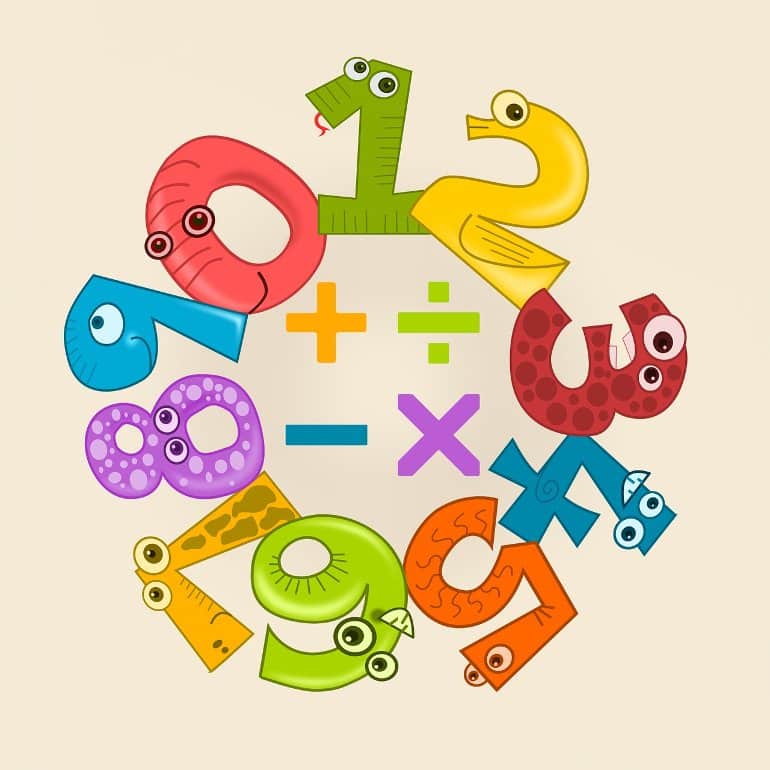Summary: A child’s ability to perform approximate calculations extends to true division. The findings may provide a basis for strategies for teaching mathematical concepts.
Source: Frontiers
We often think of multiplication and division as calculations that need to be taught in school. But a large body of research suggests that, even before children begin formal education, they possess intuitive arithmetic abilities.
A new study published in Frontiers in Human Neuroscience argues that this ability to do approximate calculations even extends to that most dreaded basic math problem—true division—with implications for how students are taught mathematical concepts in the future.
The foundation for the study is the approximate number system (ANS), a well-established theory that says people (and even nonhuman primates) from an early age have an intuitive ability to compare and estimate large sets of objects without relying upon language or symbols.
For instance, under this non-symbolic system, a child can recognize that a group of 20 dots is bigger than a group of four dots, even when the four dots take up more space on a page. The ability to make finer approximations—say, 20 dots versus 17 dots—improves into adulthood.
Bridging the achievement gap
Researchers studying ANS are interested in not just how we think about numbers before formal education, but also how to apply those findings to the classroom.
A positive result would be especially significant for low-income children—who accounted for a majority of the school-age study participants—because they are more at risk for lower math scores as they progress through school.
“The ANS is universal, and finding ways to harness the ANS might be one of many important avenues to closing the achievement gap,” said Dr. Elizabeth M Brannon, who leads the Developing Minds Lab at the University of Pennsylvania in Philadelphia and co-author on the study.
Brannon and the rest of the US-based research team performed several experiments to assess the ability of six- to nine-year-old children and college students to perform symbolic and non-symbolic approximate division. The experiments were designed not only to test their hypotheses that children indeed possess the ability to perform these sorts of calculations in early childhood, but whether that number sense can be harnessed to improve mathematical learning later in life, according to Brannon.

“This question is controversial because the existing data are mixed,” she explained. “However, our study gives some hope for that enterprise by showing that children can flexibly divide quantities and even symbols before they learn about formal division.”
A New dividing line
In one experiment, for example, both children and adults performed non-symbolic and symbolic math problems by watching dots or numerals (the dividend) on the top of a computer screen fall onto a flower with varying numbers of petals (the divisor). Their task was to decide which quantity was greater—the dots or numbers divided among the flower’s petals on the left side of the screen versus a single petal with a new quantity of dots/number on the right side of the screen.
Participants performed well above chance, with children choosing the right answer between 73% and 77% of the time, depending on whether or not they received feedback during different phases of the experiment. The adults got the right answers nearly 90% of the time.
Even children who could not answer verbal symbolic division problems did well in their experiment—a result that confirms brain imaging studies that show heightened activity in a crucial region associated with number sense.
“We were most surprised that children who could not solve any formal verbal or written division problems—for example, what is four divided by two? – were still pretty successful at the symbolic version of our flower approximate division task,” Brannon noted. “So, even before formal math education, we have an approximate number sense that relies on brain regions that continue to play a role in formal mathematics.”
About this math and neuroscience research news
Author: Press Office
Source: Frontiers
Contact: Press Office – Frontiers
Image: The image is in the public domain
Original Research: Open access.
“Young Children Intuitively Divide before they Recognize the Division Symbol” by Elizabeth M Brannon et al. Frontiers in Human Neuroscience
Abstract
See also

Young Children Intuitively Divide before they Recognize the Division Symbol
Children bring intuitive arithmetic knowledge to the classroom before formal instruction in mathematics begins. For example, children can use their number sense to add, subtract, compare ratios, and even perform scaling operations that increase or decrease a set of dots by a factor of 2 or 4.
However, it is currently unknown whether children can engage in a true division operation before formal mathematical instruction.
Here we examined the ability of 6- to 9-year-old children and college students to perform symbolic and non-symbolic approximate division. Subjects were presented with non-symbolic (dot array) or symbolic (Arabic numeral) dividends ranging from 32 to 185, and non-symbolic divisors ranging from 2 to 8. Subjects compared their imagined quotient to a visible target quantity.
Both children (Experiment 1 N = 89, Experiment 2 N = 42) and adults (Experiment 3 N = 87) were successful at the approximate division tasks in both dots and numeral formats. This was true even among the subset of children that could not recognize the division symbol or solve simple division equations, suggesting intuitive division ability precedes formal division instruction.
For both children and adults, the ability to divide non-symbolically mediated the relation between Approximate Number System (ANS) acuity and symbolic math performance, suggesting that the ability to calculate non-symbolically may be a mechanism of the relation between ANS acuity and symbolic math.
Our findings highlight the intuitive arithmetic abilities children possess before formal math instruction.
Credit: Source link





















